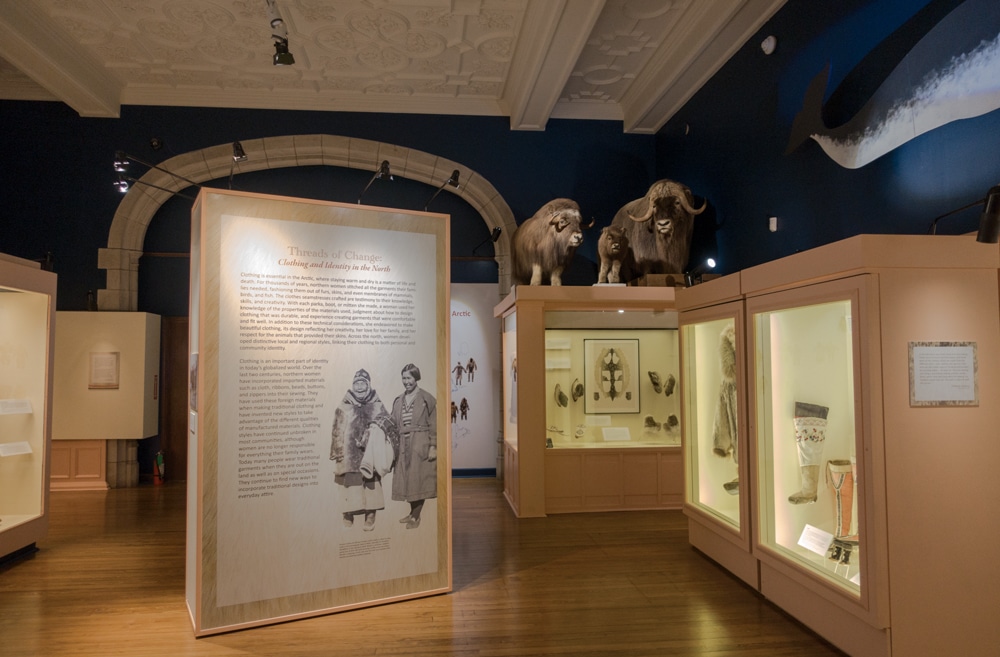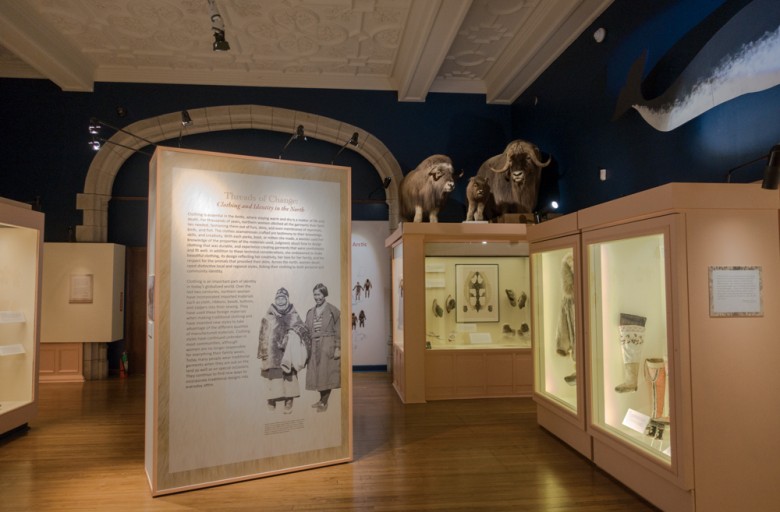The Peary-MacMillan Arctic Museum at Bowdoin College | Local Treasure
Decades after Bowdoin graduate Robert Peary first staked his claim, the path to the North Pole stills runs through his alma mater at the Peary-MacMillan Arctic Museum.

Coffee By Design | Portland, Maine
Photo Credit : Katherine Keenan
Photo Credit : Michelle Aldredge
Consistently impressive—and free of charge—the Bowdoin College Museum of Art was an obvious stop on our recent visit to Brunswick, Maine. Afterward, we took advantage of the unseasonably warm day to stroll the history-steeped campus, thinking of how Henry Wadsworth Longfellow had once walked these grounds, as did his classmate Nathaniel Hawthorne. By the entrance to Hubbard Hall, though, we paused at a small wooden sign reading simply: “Peary-MacMillan Arctic Museum.” Intrigued, we opened the door—and stepped into the frigid world of Robert Peary (Class of 1877) and Donald MacMillan (Class of 1898), two of the explorers most responsible for opening the Arctic to the world.
Right there in the entryway, we were greeted by the sight of a large wooden sledge, one of five used during Peary’s final Arctic expedition, in 1909. A Maine native who studied civil engineering at Bowdoin, Peary first crossed a section of the Greenland ice cap in 1886. During later trips he learned from the indigenous Inuit people how to make clothing from animal skins, build igloos for shelter, and use dog sleds like this one for transportation.
Since a major challenge of early Arctic exploration was the small window of time during which the days were long enough and the ice was strong enough for safe traveling, it took several trips for Peary to establish a vital string of igloo camps, each fully stocked. Finally, on Peary’s eighth and final Arctic voyage, he—along with his aide, Matthew Henson, and four Inuit guides—reputedly reached the North Pole on April 6, 1909.
MacMillan had also signed on for Peary’s last expedition. A Massachusetts native who studied geology at Bowdoin, he first came to Peary’s attention when, in two separate incidents, he rescued capsized boaters in Casco Bay. Impressed by his courage, Peary invited him to join his crew. MacMillan missed the push to the North Pole, however, because he had frostbite and had to turn back.
Peary’s Arctic mission ended after that 1909 trip, but MacMillan’s was just beginning. He would return nearly 30 more times—making his last trip at age 82—absorbing knowledge from the Inuits while studying the Arctic environment. He established a school in Labrador and compiled a dictionary of the Inuktitut language.
Stepping into the core of the museum, we were drawn immediately to a taxidermied polar bear atop a display case. There also were walruses and puffins and … was that a musk ox? A narwhal?! Our inner children eventually settled down, though, and we were able to turn our focus to the display cases beneath.
The museum opened in 1967 with a collection of objects and photographs donated mainly by MacMillan; his wife, Miriam; and the Peary family. Included here are weather and environmental measurement tools, mapmaking equipment, and even a tiny portable stove, built to boil ice for tea using just a smidge of alcohol for fuel.
The museum not only celebrates the explorers but also continues their work. There are rotating exhibits on the past and present cultures of Labrador, Baffin Island, Ellesmere Island, Greenland, and Alaska. Home movies filmed by MacMillan in the 1920s document Inuit life and skills. There’s a collection of wildlife art by Alaskan carvers, an incredible blanket made of the skin and feathers of eider ducks, a waterproof parka crafted from seal intestines, and moisture-wicking socks woven from grass, all accompanied by explanations of how and why they were made.
But the most captivating object just might be a tiny sealed envelope that was delivered anonymously to MacMillan in 1913, as he was preparing for a voyage. A note on the envelope says it should be opened only if things go “dead wrong.” MacMillan carried it with him for years but never opened it. Its contents, it seems, will forever remain a mystery.
Bowdoin College, Brunswick, ME. 207-725-3416; bowdoin.edu/arctic-museum








The wildlife art referred to is a wonderful collection of Inuit carvings rivaling those I’ve seen in the National Museum of Art in Ottawa.